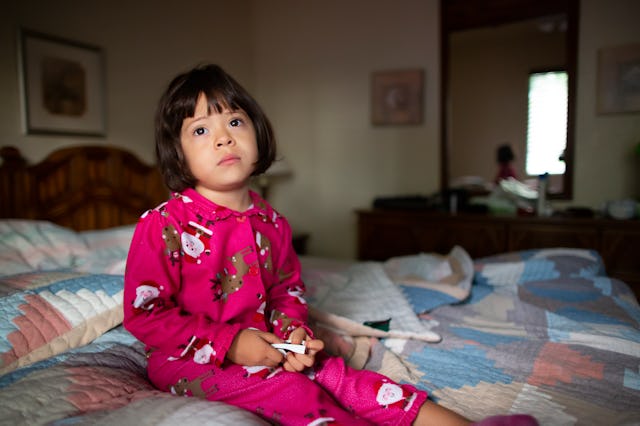Loss Through The Eyes Of A Child
It’s often the last thing we want to discuss with our kids — but they experience loss, too.

Losing something we care about feels hard at any age, but exponentially more so for a child.
I’ll never forget when my two-year-old daughter left her stuffed lovey, Bunny, at the beach one foggy day. Bunny had dirty cream fur, the perfect shade to blend with the sand. Between the shells and shiny stones, Bunny was forgotten when we packed up to leave. It wasn’t until we got home that we realized what we’d done. Oh, the tears! Her heart was broken. Perhaps I could have quickly soothed her by promising her a new bunny or an ice cream, but instead, her experience immediately pulled me back to my own childhood.
I was 11 years old when I lost my lovey, Woolly, on an airplane. Woolly wasn’t just any lovey for me. I had loved him alive, I’m sure of it. I still remember the day he ate my cheerios without asking (I saw the crumbs on his face). When I lost him, the grief felt unbearable. Even though I’d moved around a ton as a kid and was used to saying goodbye to friends and schools and houses, nothing compared to saying goodbye to Woolly. But I didn’t just feel my own ache — I felt Woolly’s, too. I kept wondering and worrying if he was ok. Did someone find him? Will they love him like I did?
Connecting to that ache allowed me to meet my daughter in that moment. It created a safe space where I could honor her emotions and she could express them freely. It also gave me the patience to help her find Bunny — and we did. It just took a frantic dash back to the beach.
Despite the fact that Bunny turned up in the end, reflecting on these emotions inspired me to write a picture book about loss. Loss is often the last thing we want to talk about with our kids, but kids experience loss, too. When we connect with kids in an empathic way, it helps them process and heal. It felt especially important for me to parent from that perspective. Having moved around a lot as a kid, I’d dealt with the loss of homes, friends, schools, and, of course, Woolly. It only made sense, then, that my first book would have both moving and loss at its core.
A Home Named Walter is told from the perspective of a house. When the family he loves moves away, Walter’s feelings are hurt. He holds tight to his grief and shuts everyone out, until he meets Little Girl. Little Girl is dealing with her own loss, but she processes hers differently. She has opened herself so much, she can feel Walter’s ache.
My goal for the book is to help readers discuss their own experiences around loss and the ways those emotions are processed. Do we let them out like Little Girl? Do we keep them tucked inside like Walter? How do we work through difficult feelings? And what helps us heal?
Reading to a child is a shared experience; a moment of connection. I hope my book helps children and adults embrace each other in moments of empathy when dealing with any loss. You may lose a Bunny, or a Woolly, or a Walter, but you’ll always find your way back to love. After all, where there’s love, there’s home.
Chelsea Lin Wallace moved around a ton as a kid. By the age of 12, she’d lived in 12 houses in 4 states. While moving around meant a lot of letting go, she held on tight to her creativity. She started making poetry and stories when she was 6 years old, and realized she felt most at home in her writing. A HOME NAMED WALTER, beautifully illustrated by Ginnie Hsu, is her debut picture book. She hopes it inspires kids to write their own stories. Nowadays, Chelsea calls Los Angeles her home, where she lives with her husband, daughter, and dog. You can find out more about Chelsea and her books on her website.
This article was originally published on